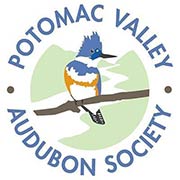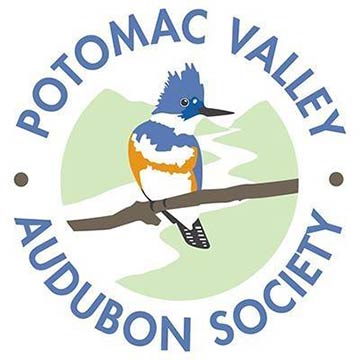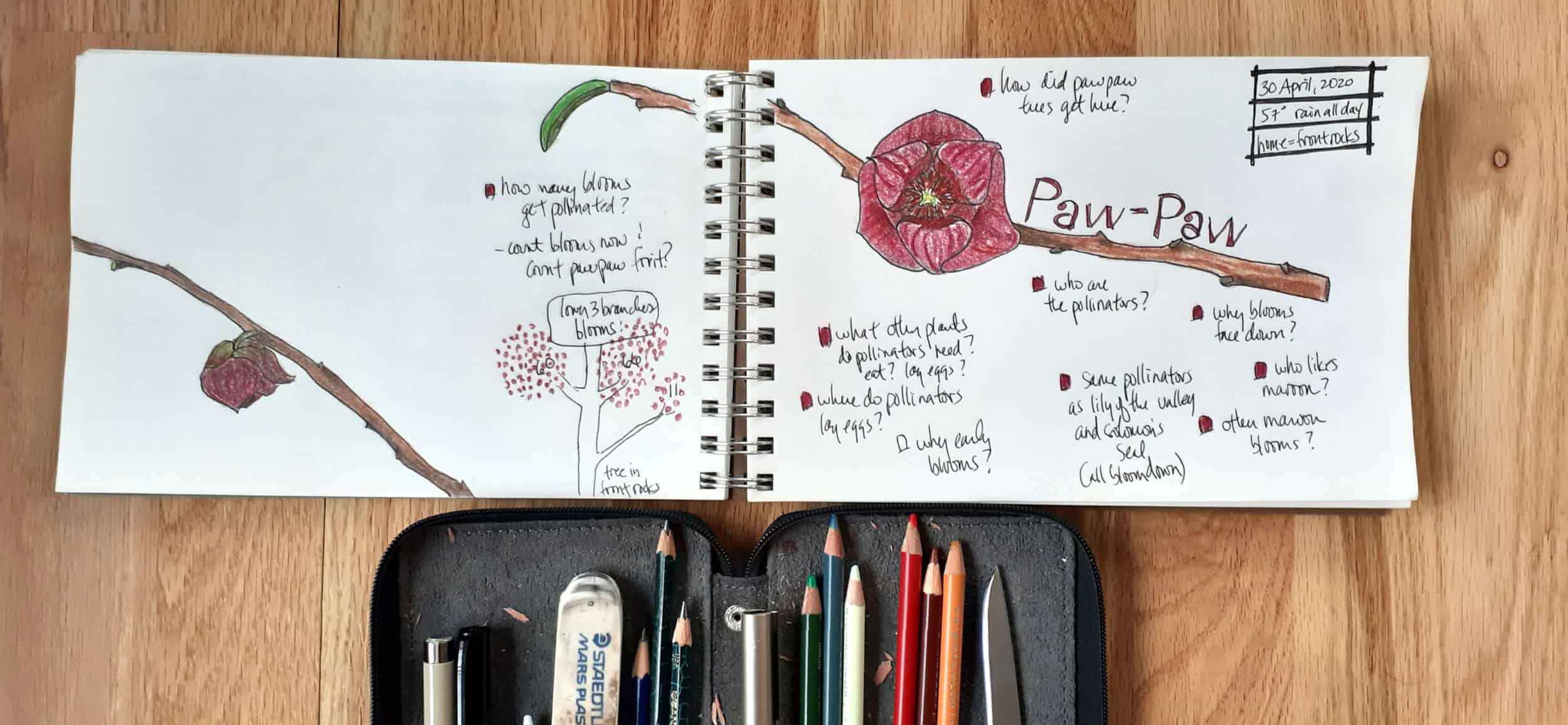News

- This event has passed.
Nature Journaling: Finding Nature at Home in May
Friday, May 1, 2020 - Sunday, May 31, 2020
Monthly Nature Journaling: May 2020
Journaling Guide: Joy Bridy
Registration for this event is not required, but we encourage you to enter your contact information using the form below, so we can be in touch with future field journaling opportunities.
It’s raining a deeply replenishing April rain as I sit in front of a window and ponder the sparrows taking advantage of this slowed down drizzle to collect some snacks. Their two-foot hop forward, scrape scrape scrape, two-foot hop back pattern is the same habit that my laying hens also have, often leading to uncovering a tasty morsel from underneath the surface of the soil, or between the roots of plants.
Like many of us, my time over these last few weeks has been slower, and I’ve had many opportunities to become more observant. By paying attention, I often find myself asking more questions. “I wonder why” and “I wonder if” are two common ones, which almost always lead to even more questions.
When these questions are noticed and written down, they can form a “Question Cascade” in our nature journals. Forming good questions is a skill, and one of the best ways to get better at something is to do it more often. So, as I look out of the window this drizzly morning, I wonder about the Paw Paw tree. Why maroon flowers? Why flowers hanging down, when so many other flowers are up? Do the pollinators of Paw Paw also pollinate Solomon’s Seal and Lily of the Valley (also down-facing flowers)? Why bloom so early? Are there other trees that bloom this way? And on and on.
In my nature journals, I tend to draw first and add words second, with a focus on accurate imagery. (Well, in all honesty, my drawings end up looking a bit cartoon-ish, or perhaps a touch of magic realism.) With a “Question Cascade,” the focus is on the words, the querries, but not on answering them. It does not matter if the questions are good questions, or answerable questions. The idea is to stretch our minds, dig deeper than the superficial first three ideas, and let each thought lead to more thoughts, which we capture on our journal pages.
Fiona Clare Gillogly is a young naturalist who uses “Question Cascades” regularly in her nature journals. She has devised visual icons and patterns that unify her pages, and allow our eyes to follow her train of thought and querries. You’ll find much inspiration from the images on her naturalist webpage if you scroll down towards the bottom of the page.
Fiona color-codes for different plants or animals on the same page, and uses question marks to start each question. She also uses larger boxed exclamation marks for surprising insights, and allows the flow of questions to move around on the page, traceable with soft lines. I enjoyed the way that she will occasionally leave room to count something, or note a specific detail, so I decided to count the Paw Paw blooms on the bottom three branches of the tree outside of my window, and left room to count the actual fruit when they become ripe, in hopes of answering my question about what percentage of blooms get pollinated.
If you look closely, Fiona also tends to use the same format to note the date, weather, and location for each of her pages. She creates a box divided into three sections, with the same info in each section. If you don’t have a regular way of noting these details for each of your pages, this is a great time to consider creating a consistent habit, which makes your journal just a little more useful in a scientific way. There are many formats to choose from, and the more that I look at others’ journals, the more I realize how interesting this small detail can be.
We would LOVE to have you share your Journaling!
There are various options for you to share your creativity:
- Facebook: If you use Facebook, please feel free to post on your Facebook page and use the hashtags #potomacaudubon #naturejournal. If you don’t use Facebook but would still like to share, please email your journaling enry to Krista Hawley at AdultPrograms@PotomacAudubon.org with ‘Nature Journaling’ in the subject line and Krista will pick one day a week where she will upload and post the pictures on the PVAS and PVMN Facebook pages (you can email them to Krista by either scanning and emailing, or just take a picture and email that to her).
- Instagram: If you use Instagram, please feel free to post on your personal Instagram page and use the hashtags: #potomacaudubon #naturejournal. If you don’t have an Instagram account, but would still like to share, follow the same procedure as emailing to Krista and we will post them to PVAS’s Instagram account when we post to PVAS’s Facebook page.
If anyone is interested, I also follow The Nature Journal Club on Facebook and highly recommend it. I look forward to seeing what you come up with this month! – Joy
P.S. As a side-note, Orion Magazine printed Amy Tan’s essay on nature journaling in their spring edition. I had no idea that Amy Tan was an avid nature journal keeper!
© 2025 · Potomac Valley Audubon—Website powered by The Downstream Project


